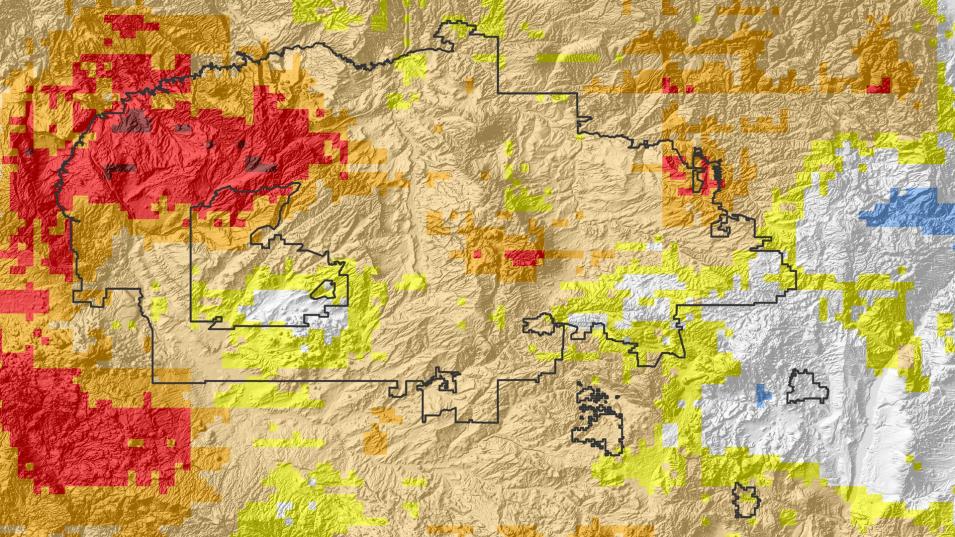During the Fall 2016 term of the NASA DEVELOP National Program, participants used geospatial technologies to investigate and analyze drought, forest cover, water resources, agriculture, ecosystem health, and disasters across the world. Each project that a DEVELOP team completes is conducted in partnership with agencies or organizations local to the study area to ensure that the project outcomes or observations will have an impact. Fundamental to the analysis and geospatial component of each of these projects is NASA Earth science remote sensing data. Many of these projects use data distributed by NASA's Land Processes Distributed Active Archive Center (LP DAAC) and collected by the Moderate Resolution Imaging Spectroradiometer (MODIS) sensor onboard NASA’s Terra and Aqua platforms, the Terra Advanced Spaceborne Thermal Emission and Reflection Radiometer (ASTER), and derived data from NASA’s Shuttle Radar Topography Mission (SRTM).
All the projects conducted in the Fall Term, as well as in past terms, can be found in the DEVELOP archive.
Featured Project: Drought in the Navajo Nation
One of the projects, Beyond a Shadow of a Drought III, used NASA Earth Observation data to study severe drought in the Navajo Nation in the southwestern United States. The Navajo Nation is seeing a reduction in livestock and agricultural practices and is also seeing a third of the population needing to bring in water from external resources due to the drought. A 2011 Navajo Nation Water Resource Development Strategy report found that $300 million is needed for public water system drought mitigation, but only $10 million is available in the current response plan. Future planning and monitoring is crucial to determine the highest needs area in the Navajo Nation and the disbursement of current funds. Currently the Navajo Nation Water Management Branch (NNWMB) publishes a monthly drought monitoring report that pieces together regional and national hydroclimate variables, to classify drought in the Navajo Nation, including: precipitation, snowpack, and temperature. This practice provides limited information and is labor intensive. The previous Navajo Nation Climate I and II DEVELOP teams created a decision support tool called the Drought Severity Assessment Tool 2.0 (DSAT 2.0) to help make drought classification in the Navajo Nation easier and more effective. In the Fall 2016 term, the Navajo Nation Climate III DEVELOP team compared the different drivers of drought, both spatially and temporally, and also validated the DSAT 2.0 tool.
